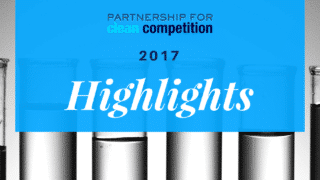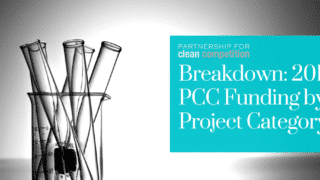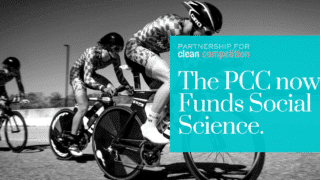REQUEST FOR PROPOSALS – TARGETED RESEARCH & DEVELOPMENT
Single Cell HbA1C Fraction Distribution Assay
This RFP aims at funding an analytical approach to precisely measure percent glycated hemoglobin (HbA1C) fraction at the single Red Blood Cell (RBC) level from whole-blood samples. These measures should enable single cell HbA1C fraction dynamics to be expressed from a bulk blood sample and be repeatable to a high-degree of precision/accuracy within and between laboratories and validated.
Questions or proposals from interested parties should be submitted to Michael Pearlmutter at mpearlmutter@cleancompetition.org by October 31, 2019.
Research Topic
The average HbA1c is biomarker used clinically to estimate of a patient’s average blood glucose (ABG) over the past 3-4 months. Non-enzymatic glycation of the hemoglobin beta chain occurs slowly, and the percent of glycated hemoglobin increases with elevated blood glucose levels and increased RBC/hemoglobin age. HbA1c measurements currently represent a weighted average of ABG over the past 4 months; with the prior months ABG accounting for ~50% of the signal; with ~25% of the signal from the prior 30-60 days, and the remaining 25% from the past 2-4 months. HbA1c average value measurements are neither a perfect predictor of health outcomes nor even a perfect predictor of ABG. These discrepancies may be due in part to variation in RBC lifespan from one person to the next. As RBCs age, more of the hemoglobin they contain becomes irreversibly glycated. Therefore, medical conditions that result in increased RBC lifespan (such as some mild cases of iron, folate, and vitamin B12 deficiency anemias and asplenia) may result in increased HbA1c levels even when ABG is constant.
The ability to measure HbA1c on an individual cell level, instead of a mean population measurement in a blood sample, would eliminate many of the concerns described above. First, this would allow patients and clinicians to acquire an accurate estimate of recent ABG, indicative of lifestyle or therapy changes sooner than three-month follow-ups. Next, many acute conditions and therapeutic drug courses are known to affect blood glucose levels. For those who are not in regular contact with medical professionals for diabetic monitoring, the acute setting may be the only time HbA1c can be measured. Therefore, if a subset of young RBCs could be eliminated from the glycated hemoglobin analysis, it would be possible to make inferences about a patient’s glycemia prior to an acute illness or drug treatment. Finally, single-cell glycated hemoglobin fractions paired with models of RBC aging may allow for inference of the overall RBC age distribution, providing insight into the recent history of the rates of erythropoiesis and hemolysis in individual patients and possibly numerous clinical benefits from more precise diagnosis and monitoring.
Single-cell analysis of glycated hemoglobin may be beneficial to the sports anti-doping world by enabling inference of an individual’s RBC age distribution. In order to gain a competitive edge in endurance sports, athletes have been known to draw their own blood, store if for weeks or months, and re-infuse it before an event to increase the oxygen carrying-capacity of their blood. Typically, the storage solution for the blood is hyperglycemic, and the excess glucose in the buffer may result in a perturbed (likely increased) glycated hemoglobin in the stored RBCs that have been re-infused. However, some data suggests that any increase in HbA1c may be masked by a dilutional effect from the relatively small volume of RBCs transfused to the total RBC volume. Likewise, the use of erythroid stimulating agents may alter the HbA1C population dynamics by having more young cells with lower glycated hemoglobin.
This request for proposal is asking for a research team to develop a new flow cytometric or any other (e.g., mass spectroscopy) approach that will allow for the calculation of percent glycated hemoglobin on a single cell level and could eventually be transferable to anti-doping laboratories. This measurement would likely have many clinical benefits for patients and clinicians, diabetic researchers, and the sport anti-doping community.
Applicants and Methods Capabilities
Applicants should have expertise in the fields of the appropriate clinical laboratory methodology, HbA1c, bioinformatics, and biomarker discovery. Applicants should have access to blood samples derived from a diabetic population or from clinical studies involving significant hematologic perturbations such as blood removal or infusion. Collaborations between research groups is encouraged. Applicants are encouraged to contact the Partnership for Clean Competition for assistance with collaborations and with regard to technical aspects of this project.
The analytical approach must be able to measure HbA1c in hundreds of RBCs or more from each blood sample and eventually be transferrable for routine use in anti-doping laboratories. Proposals must include validation studies demonstrating the precision of the method’s inference of all deciles of the single-RBC HbA1c distribution, i.e, what is the analytic variation for the 10th percentile of the single-RBC HbA1c distribution, the 20th percentile, etc. The mean of the single-RBC HbA1c distribution should be validated against a validated HbA1c assay.
The successful candidate must be willing to publish their research findings in a peer-reviewed journal.
Questions or proposals from interested parties should be submitted to Michael Pearlmutter at mpearlmutter@cleancompetition.org by October 31, 2019.




